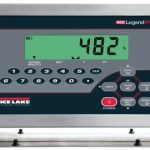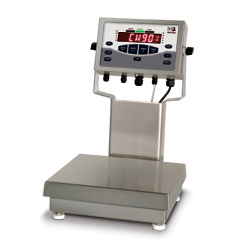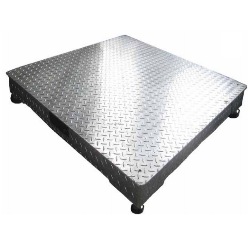From a scale company perspective, when we hear the question, why does the number on the scale fluctuate so much? There are several answers below that could be true.
When we define the word fluctuate, the definition is: rise and fall irregularly in number or amount. Sometimes the word fluctuation can be used interchangeably with bouncing or changing.

From a healthcare scale or bathroom scale perspective: It is normal to see your body weight vary daily. It could be various reasons such as food or water intake. Maybe a new diet.
In the scenarios that we see more often as an Industrial Scale Company, when we’re asked why does the number on the scale fluctuate so much? The answers below are usually true.
Often with industrial scales a customer places an object on the scale and it is a certain weight. There is usually little to no fluctuation. If the scale does fluctuate more than a couple graduations, then it likely means that some component in the scale is not working correctly (main board, load cell, etc…) or it could mean that the scale needs to be re-calibrated.
With commercial scales or industrial scales, if you place an object or weight on the scale, there should be little to no fluctuation. If the weight is bouncing around, then you likely have a problem of some type. Sometimes it can be something as simple as wind or water. If you’ve ever tried to weigh trucks on a 70 foot long truck scale on a windy day, you have likely seen truck weights fluctuating. Once the wind subsides, the weigh fluctuation should as well. As for water, if a junction box has water inside, that can cause fluctuations. Dry out the j-box and often the weight stabilizes.
Frequency interference on a digital scale can be caused by several factors
One main factor is the presence of other electronic devices in the vicinity. Microwaves, cell phones, and static electricity are examples of such devices that emit radio frequencies that can potentially disrupt the functionality of the scale. The fluctuating electromagnetic radiation emitted by these wireless devices can interfere with the scale’s ability to provide stable and precise readings.
To ensure consistent and accurate results, it is crucial to carefully examine the workspace and remove any nearby electronic devices before taking measurements with a digital scale. By eliminating potential sources of interference, one can minimize the negative influences on the scale’s performance and ensure reliable readings.
Frequency interference on a digital scale can be caused by several factors. One main factor is the presence of other electronic devices in the vicinity. Microwaves, cell phones, and static electricity are examples of such devices that emit radio frequencies that can potentially disrupt the functionality of the scale. The fluctuating electromagnetic radiation emitted by these wireless devices can interfere with the scale’s ability to provide stable and precise readings. To ensure consistent and accurate results, it is crucial to carefully examine the workspace and remove any nearby electronic devices before taking measurements with a digital scale. By eliminating potential sources of interference, one can minimize the negative influences on the scale’s performance and ensure reliable readings.
What are the contact details for CCS technical support?
To get in touch with CCS technical support, you can reach out to our service team for assistance with any issues regarding inaccurate readings on your digital scale. Please feel free to complete our form on our website or submit a service request, and our experienced technicians will promptly attend to your request, working diligently to restore your scale’s functionality. We are committed to providing timely and effective solutions to ensure your scale is in proper working order.
Where can Someone Find High Quality Digital Scales for Purchase?
If you’re wondering where to find high-quality digital scales for purchase, look no further. At CCS we offer an extensive range of premium digital scales from many scale manufacturers that are sure to meet your needs. Our selection boasts a variety of models, ensuring that you’ll find the perfect digital scale for your requirements. Experience the convenience and precision of our top-notch digital scales by exploring our collection today on Central Carolina Scale.com or by calling the sales department.


